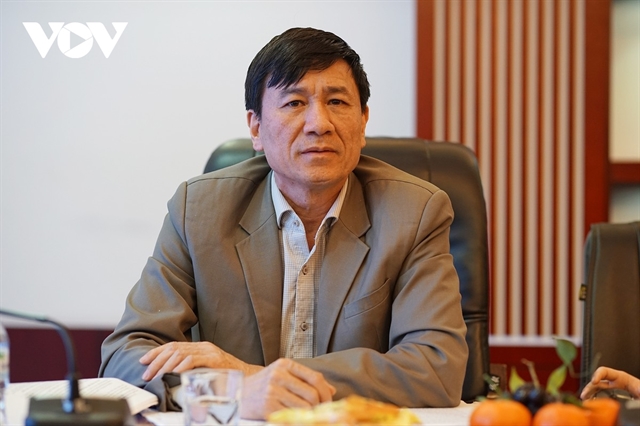 Opinion
Opinion


|
| Lê Đình Quảng, deputy head of Laws and Policy Department under Vietnam General Confederation of Labour. — Photo vov.vn |
Lê Đình Quảng, deputy head of the Laws and Policy Department under Vietnam General Confederation of Labour, speaks to Voice of Vietnam newspaper about labour market development in 2023.
How do you feel about the working atmosphere of labourers after the Tết (Lunar New Year) holiday?
I could feel the responsibility and excitement of employees. There are many factors contributing to this positive vibe. One of those is the attention and encouragement of employers, trade unions, and the whole political system for employees in recent times, especially during the Lunar New Year. This is a catalyst to help employees be aware of their responsibilities and feel attached to businesses.
When returning, labourers work with a high sense of responsibility, devoting themselves to the sustainable development of their businesses. I think this is a new spirit of this year.
I remember that in previous years, about 80 per cent of labourers returned to work after the holiday, but this year, especially in Bình Dương or Hà Nội, it could be seen that the percentage of workers returning was high. The working spirit from the first days after Tết could be felt more obviously than in the same period of previous years.
Do you think this positive vibe is thanks to social welfare regimes that businesses offer to employees such as increasing wages, organising shuttles to send workers back home before Tết and take them back to rental houses after Tết?
I think this is the catalyst to help employees have a serious and responsible working attitude, and stay attached to businesses.
A lot of businesses faced difficulties before Tết. There was also a lot of unemployment. Businesses had to cut jobs during the pandemic and economic recession. Employers, trade unions and socio-political organisations have cared for employees when businesses faced difficulties.
According to the Ministry of Labour, Invalids and Social Affairs, a shortage of workers is not forecast for the beginning of this year. But a shortage of jobs is predicted in the first and second quarters, especially in the textile, footwear or wood processing industries and mainly concentrated in the southern region. How important is the role of units connecting labour supply and demand?
Recently, businesses in textile, garment, leather, footwear and wood processing in key southern regions have had to narrow production and cut down on labourers due to the influence of COVID-19, impacts of the war between Russia and Ukraine, as well as strategic competition between major countries and economic recession.
According to the data we collected, nearly 54,000 workers lost their jobs. However, statistics of all 63 provinces and cities still showed a demand among businesses to recruit total 400,000 workers by the end of 2022.
In general, businesses are in great demand for labour and this is just a short-term issue. This requires the role of the units connecting labour supply and demand.
We must promote labour supply and demand connecting activities, hold consultation sessions and introduce jobs to employees. This is a very important solution to ensure a harmonious, stable and progressive labour market.
The labour market is forecast to face more challenges. What is your personal opinion on this?
In 2023, it is forecast that our labour market will continue being greatly affected by global and domestic challenges. Meanwhile, our labour market has not really developed sustainably in the face of internal and external fluctuations.
We will face difficulties in ensuring the balance of the labour market. I think the job shortage, especially the short-term shortage in the first phase, will still happen. Job shortages in key industrial parks and export processing zones, especially in textile, leather and footwear, wood processing and electronics enterprises may continue because we have not been able to balance supply – demand.
The second challenge is about the quality of our human resources. At present, the labour demand of businesses is high but not all labourers meet the requirements.
Last but not least, we might face a challenge of maintaining employment stability. Many workers are switching or leaving jobs.
What solutions are needed to develop the labour market stably and harmoniously in 2023?
To solve those inadequacies, we must have a number of solutions.
First, we must continue to improve the legal framework, mechanisms and policies related to the labour market, to ensure that the labour market operates safely, stably, synchronously and effectively.
I think the most fundamental solution is to stabilise the macro-economy, control inflation, boost production and business, create jobs, and ensure income and stable lives for workers.
We must develop human resources, especially high-quality human resources to meet the requirements in the current development context.
We must perfect the labour administration system towards modernisation and transparency, serving as a basis for the effective implementation of policies on employment and social security.
It is necessary to promote labour supply and demand connecting activities, job counselling and introduction, to connect the domestic and foreign labour markets in the context of extensive integration.
Finally, I think we must also pay great attention to the prevention of disputes arising at work including labour strike. — VNS




